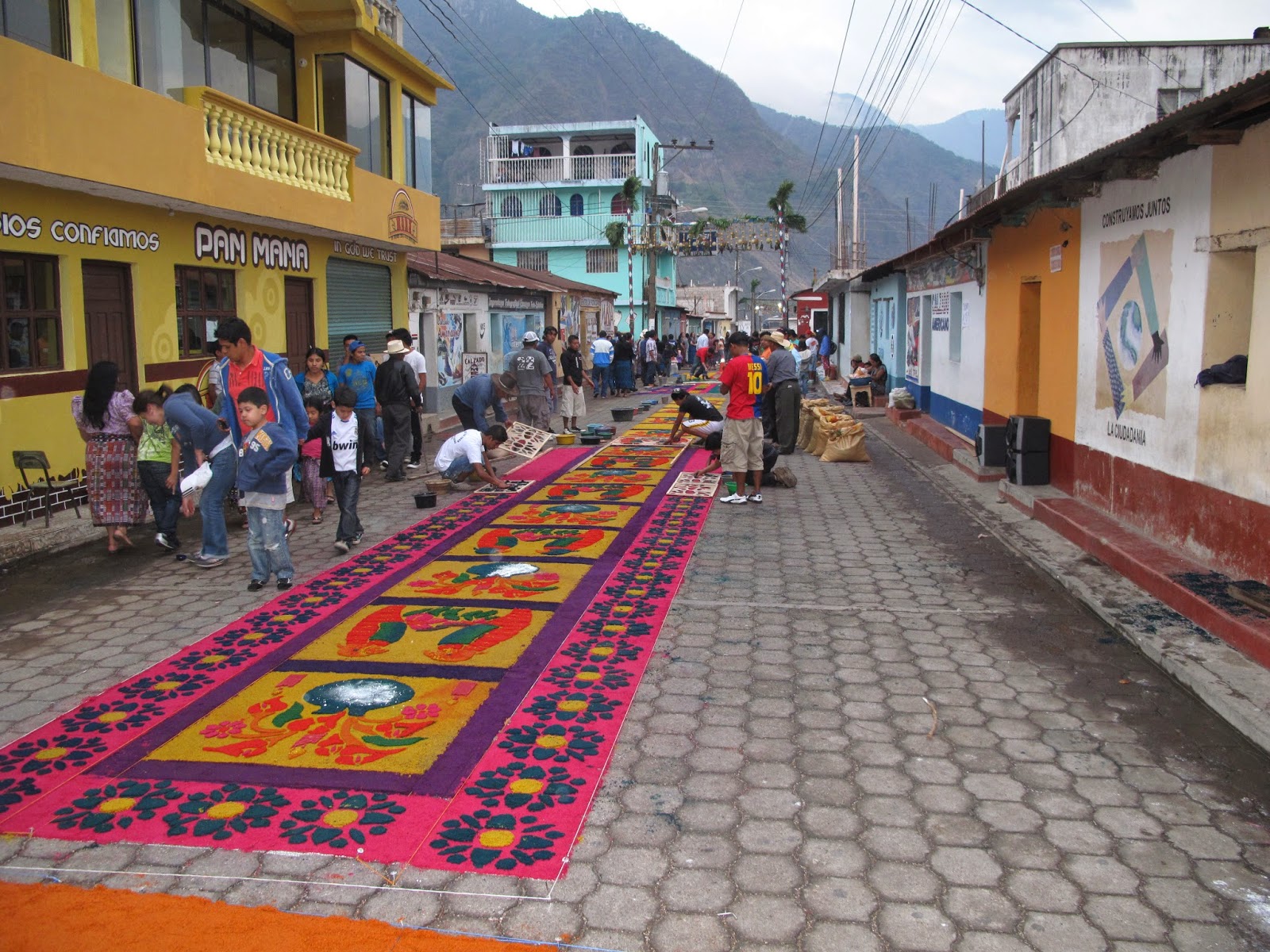THE VILLAGES OF THE LAKE
The
art and crafts come primarily from the towns of San Pedro La Laguna, Santiago
Atitlan and San Juan La Laguna. These are all Tz-utujil speaking Mayan towns.
There are more than a dozen towns and villages around the lake representing
three Mayan groups and languages (Tz’utujil, Kaqchikel and K’iche). Each has
their own distinct dress, crafts and characteristics. Not long ago all the
buildings were simple adobe, there was no electricity, only footpaths connected
the towns and dugout canoes (cayucos) were the primary mode of transportation.
Smaller cayucos are still used for fishing and gathering reeds.
These villages, like all of
the Mayan communities in Guatemala
San Juan La Laguna is a
small Tz’utujil Mayan town of about 5,000 residents nestled in a cove on a hill
at the south west end of Lake Atitlan. A 2,000 foot high ridge and the “Rostro
Maya” (Face of the Maya) mountain form the backdrop. A patchwork of fields
along the fertile shores produces a variety of crops such as tomatoes and
onions. Corn, the basic staple and spiritual origin of the Mayan people, is
grown in the valley behind the town and the slopes of the mountains have more
recently been planted with coffee which has become one of the major crops.
 |
| A typical street in San Juan with the "Rostro Maya" in the background |
 During the Semana Santa
festival, “Alfombras” (carpets) are created from colored sawdust, plants and
vegetables along the streets of the town and then destroyed later in the night
as a procession of the Virgin Mary and Jesus pass over them. Creating the alfombras is a community event
done solely for the joy of making beauty and celebrating their traditions that
blend both ancient Mayan customs and the Christian ones they adopted.
During the Semana Santa
festival, “Alfombras” (carpets) are created from colored sawdust, plants and
vegetables along the streets of the town and then destroyed later in the night
as a procession of the Virgin Mary and Jesus pass over them. Creating the alfombras is a community event
done solely for the joy of making beauty and celebrating their traditions that
blend both ancient Mayan customs and the Christian ones they adopted.
SAN PEDRO LA LAGUNA
San Pedro La Laguna is the close neighboring town to San Juan and yet is a very different place. It has a population of about 15,000 with densely packed buildings and a maze of alleys. Although still a traditional Mayan town, it also has an active expat community and is more “modern” in its attitude than San Juan. The people are incredibly gracious and open and San Pedro has a large and vibrant Mercado (market place) where one can buy fresh produce, fish and meat and other items such as baskets, hand made wooden tables, shoes, and kitchen ware. Vulcan San Pedro is a powerful presence rising over 5,000 feet behind the village. Like San Juan small vegetable plots border the lake and corn and coffee fields rise up into the hills and along the slopes of the volcano.
San Pedro is also well known
for its artists and is the town where the art naïf style originated. Artistic expression
is important in San Pedro and there are a number of powerful murals that
address some of the political, social, economic and environmental issues that
are impacting the town and Guatemala
Santiago Atitlan is the
biggest town on the lake with a population of over 50,000 people. It is
situated at the base of the largest volcano on the lake, Vulcan Santiago. It suffered
some of the worst atrocities of the war including massacres and torture of its
citizens and the assassination of its Catholic priest who would not back down
from standing up for the rights of the indigenous people he loved. He continues
to be remembered fondly and as a martyr. Santiago Santiago

No comments:
Post a Comment